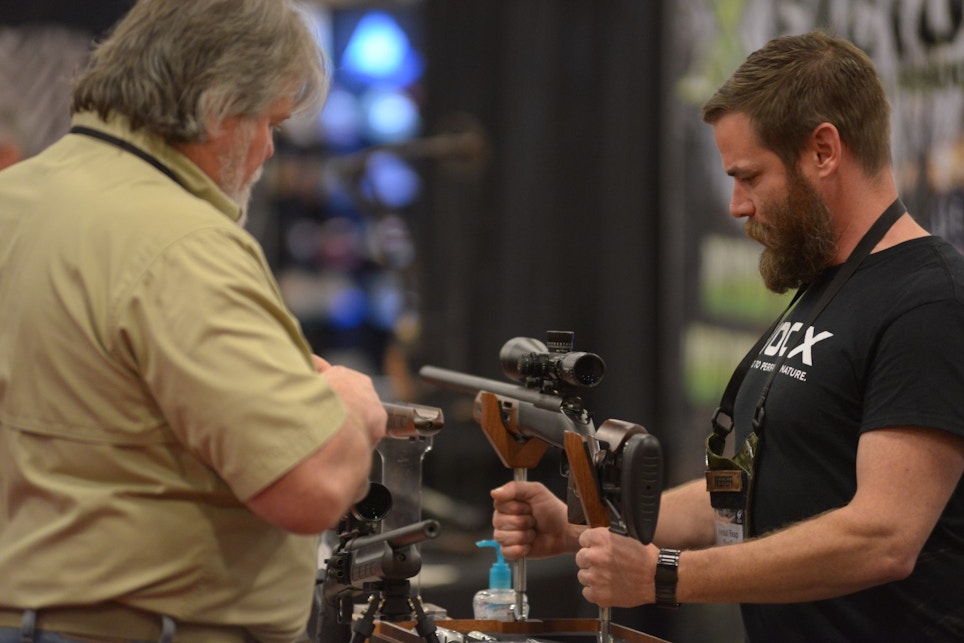The U.S. Fish & Wildlife Service compiles numbers on hunting license, tag, and stamp sales annually. You can find their 2021 report on the USFWS website. According to this report, in 2021, there were 15,202,669 paid hunting license holders in the U.S. The report shows that there were a total of 34,712,508 resident hunting licenses, tags, permits and stamps (HLTPS) purchased in 2021, along with 3,878,354 nonresident purchases of the same items. In sum, residents spent $545,673,926 on these items, while nonresidents spent $372,804,333, for a grand total of $918,478,259. That’s a lot of scratch!
Total hunter numbers, however, are down from years ago. In 2004, the USFWS reported there were 14.96 million hunters, a number that was down sharply from the peak years of the 1980s, when hunter numbers approached 17 million. According to the USFWS Report, “1980-1995 Participation in Fishing, Hunting, and Wildlife Watching; National and Regional Demographic Trends,” between 1980 and 1995, the number of Americans who hunted and/or fished in the U.S. increased 12%, with the number of anglers increasing 16% and the number of hunters decreasing 8%. Fishing increased at nearly the same rate as overall population growth (17%.) Hunting’s 8% decline occurred the first half of the 1990s after a constant level of hunting participation throughout the 1980s. The number of Americans who hunted was stable from 1980 to 1990, falling 8% from 1990 to 1995. From 1980 to 1995, the Midwest had a slight increase, hunting by residents of the West decreased 6%, the South had a decrease of 12%, and the Northeast saw the largest decrease of 18%.
In 2019 and 2020, the total paid hunting license holder numbers were 15,544,849 and 15,158,443, respectively. Since 2004, the peak year for the sale of HLTPS was 2009, with 45.28 million, which for some reason is a statistical anomaly, since the numbers from 2004-2019 range from 34.19 million to 35.9 million, with a fluctuation of about 2.5 million. The numbers jumped during the COVID years of 2020-21, with 35,091,264 HLTPS purchases in the peak year of 2020, when a surge of new hunters took to the woods looking for something locally to do amid COVID lockdowns and a mini-surge in the locavore movement. How many of them stick with it as lockdowns fade remains to be seen.
Which states have the most total hunters? In 2021, the top 10 were Texas (1,094,753), Pennsylvania (945,731), Georgia (724,269), Tennessee (694,458), Wisconsin (666,670), Michigan (642,242), North Carolina (609,131), New York (550,868), Minnesota (545,300), and Oklahoma (512,724.) Back in 2004, it was Texas (1,027,908), Pennsylvania (1,048,731), Michigan (870,432), Tennessee (725,110), New York (696,679), Wisconsin (689,099), Minnesota (585,104), Missouri (539,062), North Carolina (433,135), and Arkansas (402,493.)
In 2021, which 10 states had the lowest number of paid hunting license holders? As you can imagine, it’s the states with the either the smallest land mass or the most remote locations: Rhode Island (7,514), Hawaii (10,608), Delaware (15,619), Connecticut (32,052), Massachusetts (55,139), New Hampshire (55,562), Vermont (62,237), New Jersey (68,767), Nevada (89,603), and Alaska (93,559.)
An interesting number is the total hunting fee revenue generated in 2021. The top 10 states in this category, in millions of dollars, are Colorado ($49.7), Montana ($26.9), Wyoming ($23.6), Idaho ($18.7), Kansas ($18.4), South Dakota ($13.5), Texas ($12.1), New Mexico ($11.7), Arkansas ($11.2), and Missouri ($9.9.) The expense of nonresident hunting license and tag fees is a huge part of these, and several other, Western states’ annual DNR budgets. Colorado, for example, only generated $13,270,492 in resident license and tag fee sales in 2021.
According to www.macrotrends.com, the estimated total U.S. population in 2022 is 334,805,269, which of course doesn’t include any sort of accurate estimate of the tens of millions of illegal aliens residing here. The 15,202,669 paid hunting license holders in 2021 represent just 4.5% of the total population. In 2004, the total estimated U.S. population was 292,805,298; the 14.96 million hunters represented 5.1% of the total population.
The question is, why are hunter numbers stagnant, or slowly declining, as a percentage of the overall population?
Baby boomers have been the backbone of hunting in America for decades, but of course, my generation is growing older, and many have either passed on or quit hunting altogether. The younger generations, whose lives are regimented in ways I could not conceive of growing up, are engrossed in scheduled after-school activities and indoor stuff, like video games or trolling social media. I thought of this with the passing of the great football coach and TV analyst John Madden in late December. The Madden NFL video game franchise, developed in 1988, has sold upwards of 200 million copies. Kids today play the video game; kids in my generation played pick-up football outside. In fact, we hated to be cooped up inside, rain or shine.
Becoming an outdoorsman takes time, and lots of it; you learn best by stumbling around woods and making mistakes, not from video games, social media, or YouTube. This dovetails with the increased urbanization of America, where development continues to gobble up open space where people used to hunt. Many private landowners, who decades before welcomed courteous hunters who asked permission, now often post their land or lease it to those with deep pockets. Several studies I’ve seen over the years point to a lack of easy, affordable or no-cost access for a place to hunt as one reason people give up hunting. Sure, there are millions of acres of public land open to hunting, but most of it is located west of the Mississippi River, and much of it is pretty crowded during popular big game hunting seasons. And the number of single-parent households, usually headed by women, is steadily rising. Moreover, most of these women aren’t hunters or shooters — though those numbers have been on the rise in recent years — meaning their children don’t have a mentor at home who can teach them and their friends.






